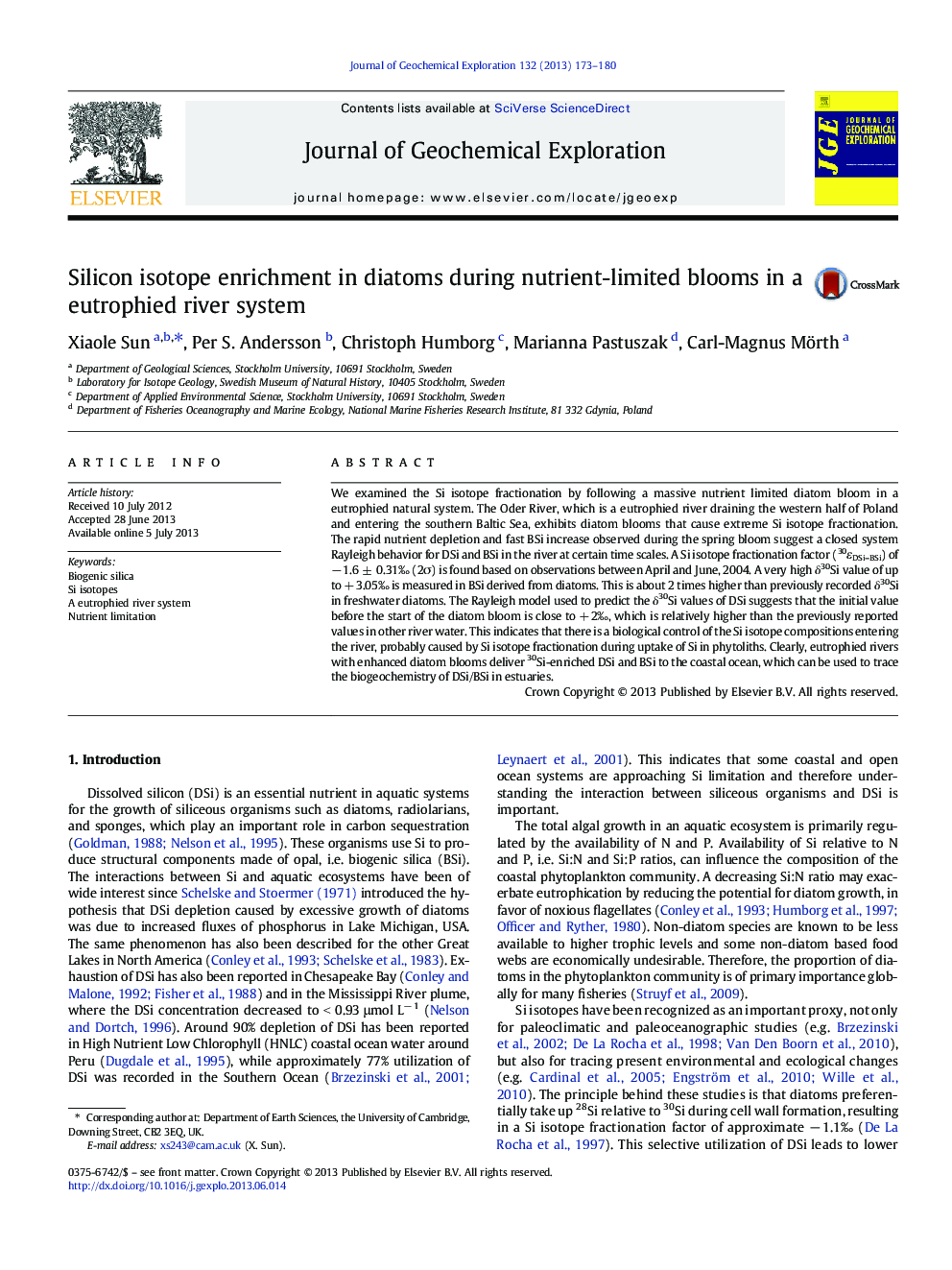| Article ID | Journal | Published Year | Pages | File Type |
|---|---|---|---|---|
| 4457487 | Journal of Geochemical Exploration | 2013 | 8 Pages |
•A δ30Si value up to 3.05‰ of diatoms with depletion of major nutrients (N, P & Si)•A Si isotope fractionation factor of − 1.6‰ in a eutrophied river system•Diatom production and dissolution as important source for DSi in coastal oceans
We examined the Si isotope fractionation by following a massive nutrient limited diatom bloom in a eutrophied natural system. The Oder River, which is a eutrophied river draining the western half of Poland and entering the southern Baltic Sea, exhibits diatom blooms that cause extreme Si isotope fractionation. The rapid nutrient depletion and fast BSi increase observed during the spring bloom suggest a closed system Rayleigh behavior for DSi and BSi in the river at certain time scales. A Si isotope fractionation factor (30εDSi–BSi) of − 1.6 ± 0.31‰ (2σ) is found based on observations between April and June, 2004. A very high δ30Si value of up to + 3.05‰ is measured in BSi derived from diatoms. This is about 2 times higher than previously recorded δ30Si in freshwater diatoms. The Rayleigh model used to predict the δ30Si values of DSi suggests that the initial value before the start of the diatom bloom is close to + 2‰, which is relatively higher than the previously reported values in other river water. This indicates that there is a biological control of the Si isotope compositions entering the river, probably caused by Si isotope fractionation during uptake of Si in phytoliths. Clearly, eutrophied rivers with enhanced diatom blooms deliver 30Si-enriched DSi and BSi to the coastal ocean, which can be used to trace the biogeochemistry of DSi/BSi in estuaries.
